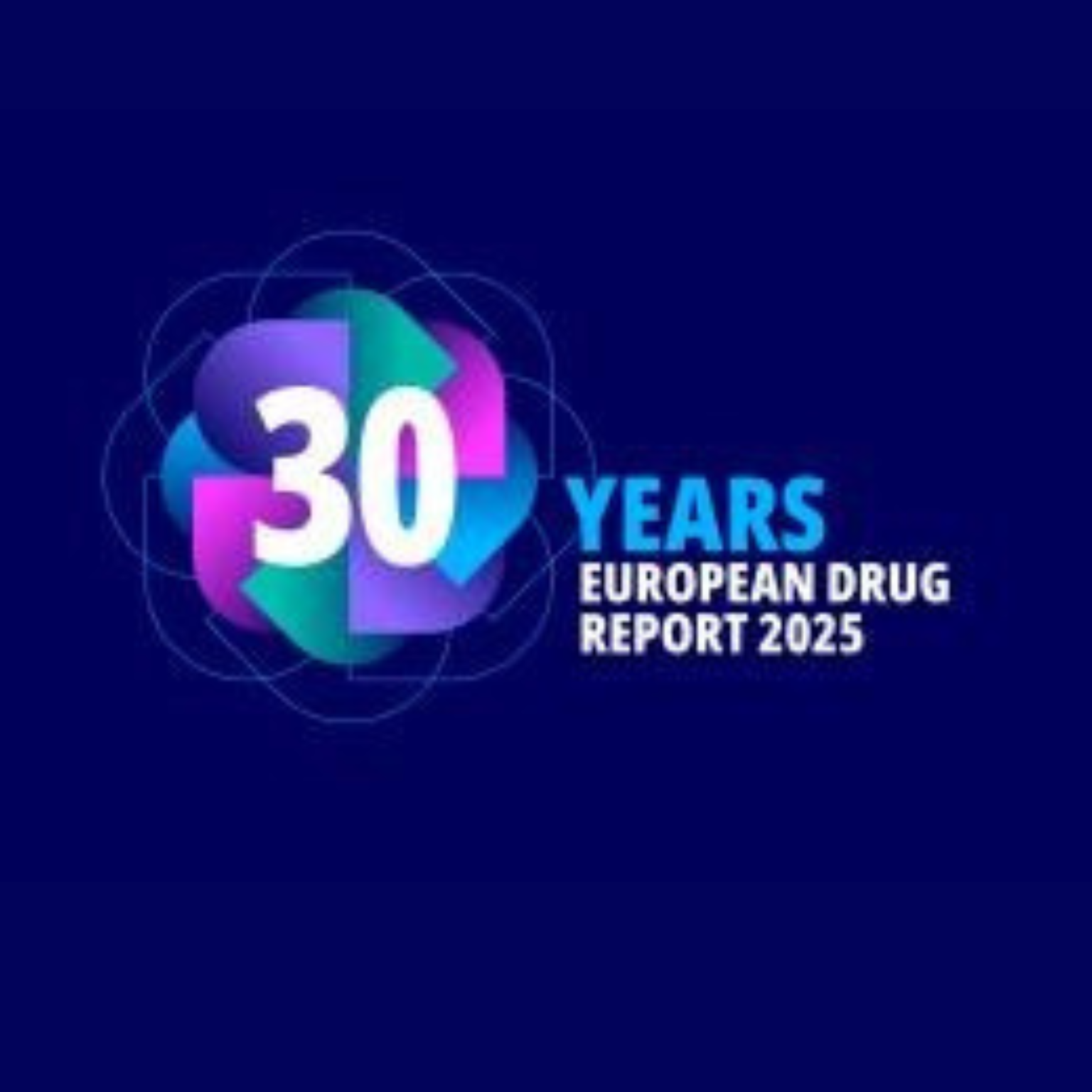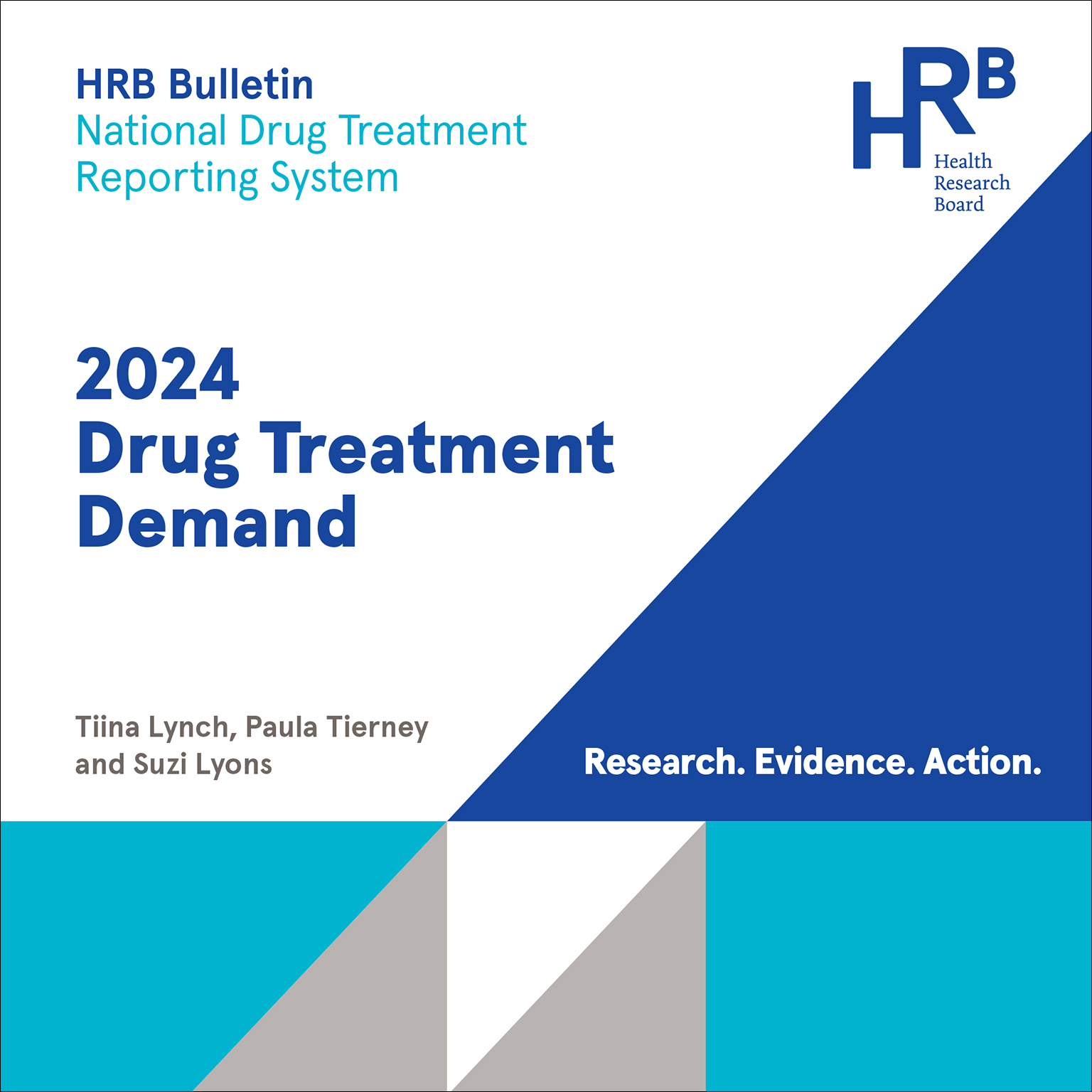Supporting research amongst medical charities – €3.2 million for 14 new projects
Executioner proteins, high intensity interval training for cancer recovery, gold nanoparticles to fight oesophageal cancer, gut bacteria that may influence epilepsy, and light activated polymers to kill infections, are just some of the projects announced today by the Health Research Board (HRB) and Medical Research Charities Group (MRCG).
23 min read - 6 Nov 2018

The 14 research projects will address the research needs of specific patient populations and were awarded through the Health Research Board and Medical Research Charities Group Joint Funding Scheme. Eleven of the 14 projects have short video explanations about their projects. (See the list of awards below for links to individual videos.)
Commenting on the awards, Dr Darrin Morrissey, Chief Executive at the HRB said,
‘There some very impressive ideas among these new research awards. The ingenuity of the research, as well as the impact that it will have on people’s lives demonstrates why it is so important to build a health research culture at the heart of our health services’.
Dr Avril Kennan, Chief Executive of the Medical Research Charities Group noted,
‘This programme provides a particular opportunity for medical research charities to support research that is in response to what patients actually need. With matched funding from the HRB, charities can in effect double their research budgets’.
Dr Caitriona Creely, Programme Manager, from the HRB added,
‘The MRCG/HRB Joint Funding Scheme is an opportunity for HRB to work with charities and support excellent research of relevance to patients, from understanding the cause of diseases, to looking for a cure, to focusing on care for people and families living with conditions day to day’.
The list of awards and their lay summaries is below. Media queries about the specifics of a particular project can be directed through each researcher’s host institution or their university press office.
The scheme runs approximately every two years. The next round of applications is expected to open in September 2019. The MRCG/HRB Joint Funding Scheme details are available on the HRB website. You can also sign up to receive an email every time that a new HRB funding scheme opens.
Ends.
For further information, contact:
Brian Cummins, Health Research Board, e bcummins@hrb.ie, m + 353858879313.
List of awards and their lay summaries.
1. Towards novel anti-infectives with enhanced wound-healing for diabetic foot infections; CO-releasing star-shaped microbicidal polymers
Dr Deirdre Fitzgerald Hughes, Royal College of Surgeon’s in Ireland.
Charity: Diabetes Ireland.
https://www.youtube.com/watch?v=UTicwpp2lMI
It is estimated that 422 million people worldwide are living with diabetes and among them, a common and serious problem is the development of diabetic foot infection. One in five patients with diabetes are hospitalised with a diabetic foot wound (DFW) at least once in their lives. Infected DFWs are treated by removal of infected tissue and intravenous antibiotics against the infecting pathogens. However, antibiotic treatment often fails due to underlying complications of diabetes such as poor blood flow to the foot and a weakened immune system. In this environment, the infecting bacteria form highly protected communities (biofilms) that are even more difficult to treat with antibiotics. One in five patients with infected DFW has lower limb amputations due to medical treatment failure. Novel ways to effectively treat infections of DFW, close the wounds created and restore function are urgently needed. Ideally, such treatments should kill the bacteria that cause these infections when applied locally to the infected foot, and deliver long-lasting healing for effective wound closure.
Here we will develop and evaluate specialised dual-action antimicrobial polymers as an externally-applied treatment for chronic infected DFWs. The antimicrobial polymers are composed of positively-charged proteins called peptides, arranged in a star-shape. We already know that star-shaped antimicrobial polymers kill a range of bacteria. Additional anti-bacterial capacity will be built into the star-shaped antimicrobial polymers by chemically attaching units that can release controlled amounts of carbon monoxide (CO) if a light source is applied. CO, although better known for its toxicity at high concentrations, has many of the therapeutic properties needed to effectively treat infected DFWs such as anti-biofilm, anti-inflammatory and wound-healing properties.
2. Novel Neurophysiological Biomarkers of Heterogeneous Network Degeneration in Motor Neuron Disease for Quantifying the Progression and Outcome in Clinical Trials
Dr Bahman Nasseroleslami, Trinity College Dublin.
Charity: Research Motor Neuron.
Motor Neurone Disease (MND)/Amyotrophic Lateral Sclerosis (ALS) is a terminal neurological condition in which the neurones (neural cells) that control movement degenerate. Despite encouraging results from studies in animals, translation of new treatments to humans has been disappointing. The aim of this study is to provide scientific basis for a new perspective on ALS. Rather than focussing on individual cells, this proposal suggests studying ALS as a disease with disruption of brain networks that control movement and cognition. We have already generated evidence that supports this. We now propose to develop new technologies that that can help to assess patients based on distinct patterns of network disruption exhibited in the brain. To achieve this, we will first collect non-invasively the brain waves (EEG) during rest to identify the networks that are disrupted. We will then study the networks that are engaged during cognitive tasks and during movement. Additionally, we activate movement-related networks in the brain by using a non-invasive device (magnetic stimulation). We will validate and improve these measures using the results of neurological examination, neuropsychological tests of cognition and behaviour, and MRI brain imaging. After these verifications, these cost-effective EEG measures can be used independently for assessment of disruptions in multiple brain networks. We will subsequently measure the network dysfunction in the same patients during the course of their illness and monitor the changes in the pattern of disruption as the disease progresses. This outcomes from this study will be useful in identifying different patient subgroups, and to measure disease progression over time, and to find better ways to measure the effects of new drugs in a clinical trial setting.
3. Incorporation of sensor technology to provide clinical meaningfulness for existing standardized measurement scales in Amyotrophic Lateral Sclerosis
Dr Deirdre Murray, Trinity College Dublin.
Charity: Research Motor Neuron.
Amyotrophic Lateral Sclerosis (ALS) also known as Motor Neurone Disease (MND) is a progressive and ultimately fatal neurodegenerative disease for which there is no cure. People with ALS experience loss of mobility and arm function, breathlessness and chest infections, loss of speech and swallow and in 30-50%, cognitive and behavioural change. Progression of the disease is measured by the ALS Functional Rating Scale-Revised (ALSFRS-R). This scale asks people to rate how they are managing on a scale of 0-4 in speech, swallowing, using their hands, walking and breathing. It is used in clinical trials to measure whether drugs are effective and in clinical practice to measure the rate of decline. However, we know that this scale is not very sensitive to what matters to people in their daily lives, and because of this, it is hard to assess the meaningfulness of some of the changes recorded. This insensitivity of the scale makes it more difficult to bring new drugs to market, as health care providers have no way to relate changes in the ALSFRS-R to meaningful real-life changes for patients (clinical meaningfulness). There is an urgent need to provide a new way to translate the ALSFRS-R into measures which show clinical meaningfulness. Technological advances have increased the availability of new sensors and devices that can now be harnessed to address this unmet need. This project will develop a toolkit of sensors and devices to monitor the changes in function experienced in ALS in a sensitive, novel, non-invasive and remote manner. These will be validated, evaluated and incorporated into our multidisciplinary clinic. The validated devices will be suitable for use in future clinical trials to improve the sensitivity to detect clinically meaningful change.
4. The role of sialylated-alpha-1 antitrypsin in resolution of acute and chronic inflammation.
Dr Emer P Reeves, Royal College of Surgeon’s in Ireland.
Charity: Alpha One.
https://www.youtube.com/watch?v=bN3qspP8ego
Alpha-1-antitrypsin (AAT) deficiency (AATD) is a hereditary disorder that results in the rapid progression of lung disease, especially in smokers. Specific treatment for this disorder is available in the form of weekly intravenous injections of AAT. This is referred to as augmentation therapy and studies have shown that augmentation therapy restores the concentration of AAT in the blood and slows down the course of lung disease.
AAT is produced by liver cells and as it is being made a variety of sugars are attached to the core protein. The process of adding sugars to AAT is called glycosylation. This results in the formation of different forms of AAT, depending on what type of sugar is attached and also how much is attached. These different sugar coated forms of AAT are referred to as glycoforms. Recently we published data demonstrating that blood from patients, as they are recovering from pneumonia, has high levels of a specific glycoform of AAT, called sialylated-AAT (S-AAT). Now we want to build on this solid foundation of work and we aim to understand whether this phenomenon is specific to pneumonia or if S-AAT is produced upon resolution of other acute and also chronic diseases.
This innovative research project will recruit patients with acute and chronic infections to confirm the production of S-AAT during resolution of inflammation. We will challenge the hypothesis that S-AAT is very effective at modulating activity of a range of inflammatory molecules and therefore aids in clearance of inflammation leading to a healthy body. We will employ knock-out cells to understand how S-AAT is produced, and in vivo murine and in vitro cell studies to confirm the anti-inflammatory effect of S-AAT.
The significant effect that changes in glycosylation can have raises the question of whether S-AAT can be considered for the manufacture of a new AAT augmentation product with enhanced anti-inflammatory properties.
5. The microbiome as an environmental trigger for autoimmune epilepsy (MICA)
Dr Gianpiero Cavalleri, Royal College of Surgeon’s in Ireland.
Charity: Epilepsy Ireland.
https://www.youtube.com/watch?v=aP1uDfr5nVU
Autoimmune epilepsy is a rare form of drug-resistant epilepsy characterised by frequent seizures in later life. Patients may respond to immune therapy, but causation of disease is poorly understood, and more targeted treatments are required. This gap in knowledge is the major priority for epilepsy specialists, and the area of greatest interest to patients. Recently, it was found that people with this condition often carry a set of genes related to the way the immune system sees foreign bugs. However, the majority of people who carry those genes do not develop autoimmune epilepsy. This has led to the idea that autoimmune epilepsy develops as a result of an environmental factor which interacts with this genetic predisposition. We propose that certain bacteria present in the gut (the microbiome) might be providing the environmental trigger that, alongside specific genes, causes autoimmune epilepsy.
We propose to recruit 100 individuals with a specific form of autoimmune epilepsy, and their siblings who haven’t developed the disease. We will collect saliva and stool from each individual, to extract human and bacterial DNA, respectively. Using state of the art DNA sequencing techniques, we will characterise the nature and number of bacteria present in the gut of people with autoimmune epilepsy and their genetically-related, but unaffected siblings. We will compare these profiles to see if the gut of people with autoimmune epilepsy has a distinctive microbiome profile. Identifying an environmental trigger behind autoimmune epilepsy would represent a major step forward both in our understanding of autoimmune epilepsy and also for epilepsy in general, as it would represent the first link between gut microbiota and epilepsy, a link that is increasingly being made for other central nervous system diseases. In addition, it may guide a set of treatments targeting the bacteria, or the immune response to the bacteria.
6. Elucidation of the role of SARM1 in retinal homeostasis and oxidative stress-induced retinal degeneration
Dr Sarah Doyle, Trinity College Dublin.
Charity: Fighting Blindness.
Photoreceptor cells found in the back of our eyes convert light into signals that allow us to see. Death of these cells and the cells that nourish them, called RPE cells, is termed retinal degeneration and is characteristic of blinding diseases such as age-related macular degeneration (AMD) and retinitis pigmentosa. Millions of people worldwide suffer varying degrees of vision-loss due to these irreversible eye conditions, in fact, the number of individuals suffering from AMD is expected to reach ~288 million globally by 2040. The process of cell-death is a programed event that directs proteins in our cells to take on ‘executioner’ roles. Over the past decade great leaps have been made in identifying these executioner proteins and in understanding the pathways that lead to their activation. There are a wide range of causes behind cell-death in the eye, but ultimately the end-point for each is photoreceptor cell death. Identifying unifying pro-death or pro-survival traits in these diseases has the potential to offer global therapeutic approaches for facilitating the protection of visual function across multiple diseases. In this research proposal, we aim to investigate the role of the executioner molecule, called SARM1, in retinal degeneration. SARM1 has already been shown to be highly efficient at triggering cell death in brain cells in response to a variety of insults. The retina is an extension of the brain, however, a role for SARM1 in triggering death of photoreceptor cells or their supporting RPE cells has not been investigated. If, as our pilot data indicates, we discover that SARM1 is a key executioner in the process of retinal degeneration, our research will have provided a new therapeutic target to slow the progression of blinding diseases. This is particularly exciting, as development of SARM1-blockers for degenerative diseases of the brain are already underway.
7. Evaluating a novel macrolide based early intervention in the clinical management of chronic infections and inflammation in Cystic Fibrosis
Professor Fergal O’Gara, University College Cork.
Charity: Irish Thoracic Society.
Chronic persistent respiratory disease is a leading cause of death worldwide. Despite years of global research, the clinical management of respiratory disease, including the life-limiting genetic disease cystic fibrosis (CF), remains a significant challenge. Treatment options are extremely limited, due in part to the increased pathogen resistance to conventional antibiotics and the lack of development of effective alternatives.
Lung scarring (known as bronchiectasis, a key factor in mortality of patients with CF) develops most rapidly in the first three years of life. Up to 70% of children with CF already have bronchiectasis before they enter school. Therefore, treatments aimed at preventing bronchiectasis must begin in early life, preferably as soon as possible following diagnosis. Lower respiratory infections are known to be a major underlying factor in bronchiectasis and the acquisition of respiratory pathogens is known to occur early in life.
The collaborative group involved in this proposal have shown over the last 5 years that the accumulation of bile acids in the lungs of paediatric patients with CF correlates strongly with pathogen acquisition, chronicity, and the onset of inflammation. Using a combination of cross-sectional and longitudinal studies, the link between bile acids and persistent antibiotic tolerant microbiomes and inflammation has been established. Therefore, innovative strategies that intercept the accumulation of bile acids in the lungs could potentially arrest the onset of lung decline until an age at which existing therapies can be implemented. The macrolide antibiotic azithromycin possesses pro-kinetic properties that limits the transition of bile acids into the respiratory tract and lungs. This proposal integrates samples, data, knowledge, and expertise from the CUH paediatric CF cohort in Ireland and the COMBAT CF clinical trial in Australia and is designed to establish the effectiveness of azithromycin in reducing chronic pathogen microbiomes and inflammation in paediatric patients with CF.
8. Preoperative Exercise to Improve Fitness in Patients Undergoing Complex Surgery for Cancer of the Lung or Oesophagus
Professor Juliette Hussey, Trinity College Dublin.
Charity: Irish Cancer Society.
Treatment for people with cancer of the lung or the oesophagus (food-pipe) often involves surgery. This surgery is complex and there is a high risk that patients will develop severe complications afterwards, mainly lung or heart problems, leading to a longer hospital stay and higher hospital costs, and impacting greatly on recovery and quality of life. The theory is that if patients’ lungs and heart can be optimised before surgery, then recovery will be improved. While fitness can be improved by exercise, the lead-in time to surgery following a cancer diagnosis is often very short, and research is needed to examine what types of exercise might be most effective at increasing fitness over a short period.
This project will investigate if a special type of exercise training called high intensity interval training (HIIT) can increase fitness levels in people scheduled for surgery for cancer of the oesophagus or the lungs. HIIT alternates between periods of high intensity or ‘all-out’ exercise, normally cycling on a stationary bike, followed by a period of more relaxed exercise. This approach is known to improve fitness but has not previously been investigated in patients awaiting major surgery.
Participants will be entered onto this project when they are referred for surgery at St James’s Hospital. Half of the group will complete HIIT for at least two weeks before surgery at the Clinical Research Facility at St James’s Hospital. The other half will prepare for surgery as normal. Groups will be compared for changes in pre-surgery fitness levels, any complications they may experience after surgery, general physical recovery after surgery and the cost of care after surgery. We anticipate that patients who undergo HIIT before surgery will have less complications and better recovery after surgery, a significantly improved quality of life, and lower costs of care.
9. Compound library screening in a zebrafish model of MSD to identify novel therapeutic compounds
Professor David Rubinsztein, University of Cambridge.
Charity: MSD Action Foundation.
Multiple Sulfatase Deficiency (MSD) is currently an untreatable disease and while we know some of the processes inside cells that cause or influence the disease, there is still much to be understood. While progress has been made from studying simple cell culture systems, this does not tell us about how different disease changes may occur in different tissues (e.g. nerves compared to muscles) and whether defects in one tissue can have consequences for other parts of the body. Hence, we need to study animal models that share the same features of the disease as we see in patients. As we do not know the targets in cells (e.g. proteins, enzymes, pathways) which may affect MSD, it is hard to follow a path of conventional drug design. However, compound screens in MSD animal models are a promising strategy to detect new compounds that can be developed into drugs. This proposal will follow on from our existing funding from the MSD Action Foundation where we will generate and characterise two zebrafish models for MSD (null and hypomorph mutation) and identify which is most suitable for compound screening. We are aware of other cell-based MSD screening projects that will use FDA-approved drug libraries therefore we have selected a complimentary approach of screening a diverse chemical library. Our aim is to perform a non-hypothesis based screen; we believe it is important to screen a library with broad chemical diversity to identify novel structures with rescuing activity. During our current funding, we will select the best zebrafish model for the compound screen, identify the optimal window for drug treatments and the most informative disease measures. In this proposal, we request funding to perform a compound screen on a diverse chemical library and to perform secondary validation assays on hits arising from the screen.
10. Autophagy induction as a novel therapeutic strategy for MSD
Dr Andrea Ballabio, Foundazione Telethon Italy.
Charity: MSD Action Foundation.
The lysosomal degradation pathway of autophagy has a crucial role in different pathophysiological conditions, such as infection, neurodegenerative disorders, cancer and ageing. In particular, autophagy plays an important role in the pathophysiology of a family of inborn errors of metabolism due to defect in the activity of lysosomal enzymes, known as Lysosomal Storage Disorders (LSDs). Thus, strategies for modulation of autophagy may represent a fascinating therapeutic prospective for treating this class of disorders. Most lysosomal storage diseases are caused by deficiencies of single lysosomal enzyme, while in Multiple Sulfatase Deficiency (MSD), a rare autosomal recessive disorder, the activities of all lysosomal enzyme “sulfatases” are profoundly impaired due to mutations in the SUMF1 (Sulfatase Modifying Factor 1) gene. SUMF1 activity is an essential limiting step for the conversion of a conserved cysteine into a formylglycine residue: this post-translation modification is required to confer to sulfatases their catalytic activity. Recently we have generated a new hypomorphic mouse model of the Multiple Sulfatase Deficiency (MSD) that better reproduces the pathological features observed in patients. The goal of this study is to test the efficacy of a novel therapeutic strategy for MSD, based on a pharmacological approach, which is the administration of TAT-Beclin1 peptide, a potent in vivo modulator of autophagy, in the new hypomorphic mouse model.
11. Toxicology Study to Support a Phase I/II Gene Therapy Clinical Trial for Multiple Sulfatase Deficiency
Dr Steven Gray, UT Southwestern Medical Center.
Charity: MSD Action Foundation.
There are currently no effective treatments available for Multiple Sulfatase Deficiency (MSD). This is a terminal paediatric genetic disease. The proposed research directly tests a gene therapy treatment approach for MSD. Prior studies have been successful treating mice with MSD, and very similar gene therapy approaches are currently being tested in humans for Spinal Muscular Atrophy, Giant Axonal Neuropathy, Batten disease type 6, and Mucopolysaccharidosis IIIA. We are proposing rat safety studies of this MSD gene therapy approach, which is a necessary step to initiating studies to test the treatment in human MSD patients. Thus, the research conducted under this proposal will directly inform and enable a feasible human gene therapy trial for MSD. The proposed project is complementary to other studies being funded by the United MSD Foundation to complete all the necessary steps to initiate a MSD gene therapy clinical trial.
The urls below link to webpages that explain both the overall context of Dr Gray’s work on rare diseases in UT Southwestern Medical Centre (first url) and some of his previous work on MSD (second url).
https://www.utsouthwestern.edu/newsroom/articles/year-2018/children-of-hope.html
https://www.utsouthwestern.edu/newsroom/articles/year-2018/willows-strength.html
12. Evaluation of the role of MxA and ISGylation in chemosensitivity in oesophageal cancer
Dr Sharon McKenna, University College Cork.
Charity: Breakthrough Cancer Research.
Many oesophageal cancers develop resistance to the drugs currently used to treat this disease. This allows the cancer cells to survive and the cancer can come back again at variable times after the initial treatment. Research already performed by this group has identified genetic differences between cancer cells that respond well to treatment and those that do not. This project will examine how the genes involved can re-program cancers and influence their response to treatment. We have already identified a novel gene pathway that can dramatically improve how cancer cells respond to chemotherapy. Understanding these novel genes and how they regulate death and survival in cancer cells will enable us to develop more specific anti-cancer agents for the future. The overall aim of this project is to identify new ways of targeting resistant cancers, so that chemotherapeutic regimes can be improved and recurrent disease eliminated in cancer patients.
13. Gold-drug: Targeting a novel dual inhibitor drug with gold nanoparticles for improving radiation response in oesophageal cancer
Professor Jacintha O’Sullivan, Trinity College Dublin.
Charity: Breakthrough Cancer Research.
Oesophageal cancer (cancer of the food pipe) has low survival rates and a very poor response to treatment. Sadly, this cancer type is on the rise in Ireland and is linked with increasing obesity rates. Unlike many other cancer types, we are still only using treatments that have existed for decades – chemotherapy drugs with radiation treatment (CRT) to kill the cancer cells followed by surgery. However the tumours in a large percentage of patients (70%) do not respond. As most patients go through CRT for no benefit, whilst enduring significant side effects, it is really important for the majority of patients that we can make their tumours sensitive to treatment.
Cancer cells do two things to prevent radiation from killing them, they (1) generate a lot of energy and (2) send out signals to trick your body, for example, they encourage blood vessels in your body to grow to the tumour so it can get more nutrients. This allows the tumour to survive instead of dying.
We discovered a novel drug called CC8 that stops cancer cells doing these two things in oesophageal cancer cells and can increase response to treatment in resistant cells. In this grant, using patient tumour samples and in mouse studies, we will package our drug with tiny gold particles. This packaging will make our drug go to the tumour and target the powerhouse of the cells that provides the energy for the cancer cells to survive. We will see how well this new combination works in oesophageal cells in the lab, in patient tumour samples and in mice.
This work will position our drug along a pathway where it could eventually be given to oesophageal patients alongside standard CRT to make tumours respond and result in better outcomes for these cancer patients with a dismal prognosis.
14. Combining electrochemotherapy with a Toll Like receptor agonist for the treatment of lung cancer
Dr Patrick Forde, University College Cork.
Charity: Breakthrough Cancer Research.
Successful cancer treatment aims to totally eliminate the entire tumour and the risk of recurrence. Treatment currently relies on removal of the primary tumour by surgery or radiotherapy followed by control of the remaining dispersed cancer cells in the whole body usually by chemotherapy. At the Cork Cancer Research Centre (CCRC) we have been examining these two aspects of treatment (removal of the tumour mass and the cancer cells circulating in the body) with the aim of eliminating the tumour mass non-invasively and recruiting an immune response against the remaining cancer cells.
In this proposal we will examine the use of electric pulses to aid in the delivery to drugs to tumour tissue. Short electric pulses have been demonstrated to make tissue temporarily more porous and allow a much greater uptake of therapeutic agents by the cancer cells. Over 400 patients with inoperable skin cancers have been treated with this approach at the CCRC with over 85% showing a positive response to treatment. The drug toxicity is limited to the site where the electric pulses are delivered. In this therapy, the toxicity is directly at the tumour tissue, thereby saving healthy organs and tissues. We will combine this with a modulator designed to improve the immune response at the site of the tumour.
Our aim is to develop this treatment further through the application a non-invasive method to deliver drugs and thereby allow the treatment of lung cancer and combining with a modulator to enhance the anti-tumour immune response. Such an approach has the potential to significantly improve the quality of life for lung cancer patients and also reduce the costs associated with therapy through shorter treatment times, reduced hospitalisation and volume of chemotherapy drugs required.
23 min read - 6 Nov 2018



